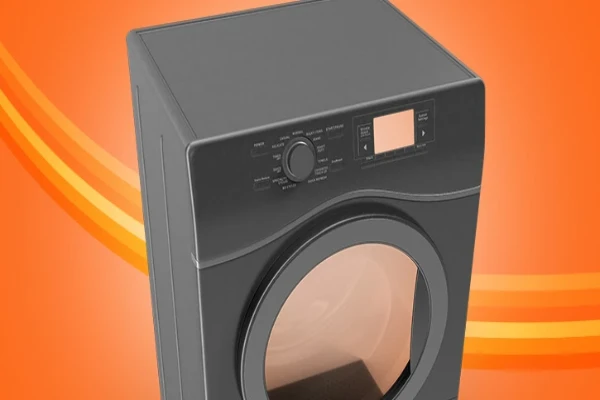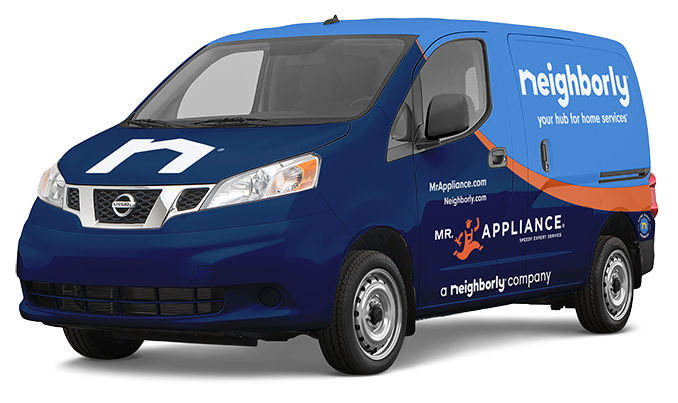
Mr. Appliance explains key steps to troubleshoot a dryer that’s not heating up.
|
Few things are more frustrating than finding your clothes still wet after you’ve run the dryer. Your dryer not heating up could be the culprit.
Common reasons for an electric or gas dryer failing to heat up properly include tripped circuit breakers, clogged vents, and no gas flow. Other causes, like a faulty thermal fuse or a broken heating element, could also be to blame.
If you gather your tools and follow this guide, you may be able to solve basic dryer heating problems on your own. But if you can’t get your dryer going or you simply don’t have time, call your local Mr. Appliance® professionals or schedule appliance service online.
Why Is My Dryer Not Heating Up? Simple Troubleshooting Tips
Addressing why your dryer is failing to heat up may be as simple as checking the dryer setting, while other troubles could signal more serious issues.
Here are some of the simpler causes of a dryer that won’t heat up:
- The dryer is set to “eco” or “cool.”
- There’s a tripped circuit breaker.
Most of these issues are easy to solve. Selecting the right setting should return your dryer function to normal.
Circuit Breaker Issues
As for circuit breaker issues, electric dryers need 240 volts to heat and run properly. If the breaker for your dryer is tripped in your electrical panel, try resetting it.
Vent Is Blocked
When the vent is blocked, it overheats and shuts down the thermostat. To fix this, clean off the lint screen and use a vacuum to clean out the lint trap. Then, remove the vent hose from the back of the dryer and shake it out. You might be surprised by all the items that have accumulated in your dryer vent hose. Assess whether it might be time for professional dryer vent cleaning. Pro tip: It’s recommended to clean out dryer vent hoses annually to prevent fires.
No Gas Flow
If you have a gas dryer, make sure you’ve paid your gas bill on time and that the gas valve feeding the dryer is open.
The Problem May Not Be Your Dryer
Check your washing machine’s performance. Is the spin cycle wringing enough water out of your clothes? Sopping-wet fabric will take a long time to dry in any dryer. Excessively wet fabric can also lead to humidity buildup in your dryer, further slowing the drying process.
Why Is My Dryer Not Heating?: The More Complex Answers
If none of the reasons above explains your dryer’s malfunction, your unit may have one of these issues:
- A faulty thermal fuse
- A broken heating element
- A broken thermostat
- A defective timer motor or control board
- A complex electrical or gas issue
We recommend consulting an expert on these problems. Many of them require mechanical expertise and a knowledge of how to source, remove, and install parts.
A professional can also inform you of whether the issue is something that can be fixed or if it is something that requires replacement. Attempting these repairs on your own can put your safety at risk and potentially damage your dryer further.
Some homeowners may try to test and replace these parts on their own, but professional dryer repair is recommended to positively diagnose the issue and eliminate safety concerns.
Dryer Not Heating Even After Troubleshooting? Call the Experts
If you’ve reached the end of your troubleshooting capabilities and your dryer is still not heating up and drying your clothes properly, you’ll likely need diagnostic and repair help from a trusted expert.
Let Mr. Appliance professionals lighten your load by servicing your dryer. We have more than 20 years of experience assessing and addressing broken dryers. Call your local Mr. Appliance or schedule service online today.
FAQs About a Dryer Not Heating
Decades of experience, highly skilled service professionals, and a commitment to exceptional customer service have made Mr. Appliance a trusted leader in appliance maintenance and repairs. Our commitment to keeping your appliances up and running includes using our many years of experience and expertise to answer your questions. Here are answers to some of the most frequently asked questions about dryer repair.
How can I tell if my dryer heating element is broken?
When your clothes dryer isn’t heating properly, a broken heating element is often the culprit. Indicators of a broken heating element include:
- The dryer is tumbling but not producing heat
- Clothes are still damp after a full cycle
- The heating coils have visible damage
While you can test the heating element with a multimeter for continuity, replacing it typically requires professional service.
What should I avoid when troubleshooting a dryer not getting hot?
When investigating why your dryer is not getting hot, avoid these potentially dangerous or costly mistakes.
Do not:
- Continue to run a malfunctioning dryer. This wastes energy and could indicate a fire hazard.
- Bypass or disable safety features like thermal fuses that protect against overheating.
- Use the dryer if you detect burning smells or smoke. If you do, unplug it immediately.
- Attempt to service gas dryer components. Working with gas requires proper training and specialized tools.
- Leave the dryer plugged in during any internal inspection or troubleshooting.
- Neglect regular lint trap and vent cleaning. Clogged dryer vents are the leading cause of heating problems and dryer fires!
- Attempt electrical component repairs without proper training. Electrical work carries a risk of shock or fire hazards.
For help troubleshooting why your dryer is not heating, contact a professional for safe, effective dryer repair service.
What causes a dryer to heat initially but then stop heating mid-cycle?
If your clothes dryer starts heating but stops during the cycle, leaving clothes partially dry, you're not alone! Many homeowners experience this frustrating problem. Several issues can cause inconsistent dryer heating:
- A cycling thermostat that's worn out or malfunctioning
- A heating element with a hairline crack that fails when it expands during heating
- A vent system that's partially clogged, causing the dryer to overheat and trigger safety cutoffs
- A faulty moisture sensor that incorrectly signals the control board to stop heating
- Loose or damaged wiring connections that fail when components heat up
Cycling between hot and cold can significantly extend drying time and put extra wear on your appliance (and your clothes!). While you might be tempted to simply run multiple dryer cycles, this is ultimately an inefficient use of energy that doesn’t address the real issue.
Why is my dryer getting warm but not hot enough to dry clothes?
If your dryer is not getting hot enough—meaning it produces some warmth but doesn't reach proper drying temperatures—several specific problems might be occurring:
- A partially clogged vent system is restricting airflow.
- A worn heating element is still functioning but with reduced efficiency.
- Your electric dryer isn’t receiving enough voltage.
- Your gas dryer has a partially blocked gas valve.
- The thermostat is malfunctioning and not reaching the proper temperature.
- A failing igniter in your gas dryer can't maintain a consistent flame.
These common problems can cause extremely long drying times and clothes that still feel damp even after extended cycles. If your clothes dryer is not heating, repairs to one or more of these components may be necessary.
How often should I clean my dryer vent to prevent heating problems?
If your clothes dryer is not heating due to lint buildup, we recommend cleaning your dryer vent at least once per year. However, if you have a large household, use a lot of lint-producing items (like towels), run multiple loads daily, or simply notice clothes taking longer to dry, you may need to clean the vent more frequently.
Dryer vent cleaning not only helps ensure proper heating for your clothes; it also reduces your fire risk and improves energy efficiency.
Is it worth repairing a dryer that's not heating, or should I replace it?
When deciding between dryer repair and replacement for a dryer that’s not heating, consider your appliance's age, repair cost, and overall condition. Many experts recommend the 50% rule: If the repair would cost 50% or more of the price of a new dryer, replacement is often the better long-term option.
Consider replacement if your appliance is more than 15 years old and repairs are costly or becoming too frequent. However, many heating issues can be relatively simple to diagnose and fix compared to other problems. If you’re unsure whether there’s life left in your dryer, schedule a professional assessment to help you make the best decision.
This article is intended for general informational purposes only and may not be applicable to every situation. You are responsible for determining the proper course of action for your home and property. Mr. Appliance is not responsible for any damages that occur as a result of this blog content or your actions. For the most accurate guidance, contact the Mr. Appliance location nearest you for a comprehensive, on-site assessment.
